In the construction, mining, and infrastructure industries, the demand for high-quality aggregates and crushed stones is ever-growing. A well-designed stone crushing production line serves as the backbone of these operations, transforming raw stone materials into various sizes of aggregates used in concrete, asphalt, road construction, and building projects. At the core of this line are specialized crusher machines, each playing a unique role in reducing stone size, ensuring consistency, and maximizing production efficiency. This article explores the components, working principles, key considerations, and technological advancements of stone crushing production lines, providing valuable insights for industry professionals and investors.
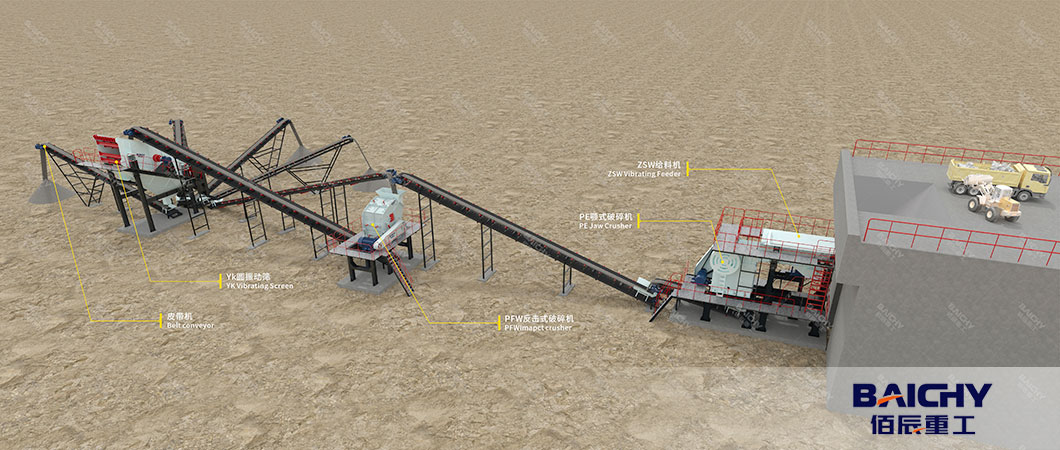
1. Understanding Stone Crushing Production Lines: Basics and Objectives
A stone crushing production line is a systematic arrangement of machinery designed to process raw stone (such as limestone, granite, basalt, and river pebbles) through a series of crushing stages, resulting in finished products of specified sizes. The primary objectives are:
•To reduce large stones into smaller, usable aggregates.
•To ensure uniform particle size for consistent performance in end applications.
•To maximize production output while minimizing energy consumption and operational costs.
These lines are highly customizable, with configurations tailored to the type of raw material, desired product size, and production capacity—ranging from small-scale operations (10–50 tons per hour) to large industrial plants (500–2000 tons per hour).
2. Core Crusher Machines: Types and Their Roles in the Production Line
The efficiency of a stone crushing line depends on selecting the right crusher machines for each stage. Here are the key types and their functions:
2.1 Primary Crushers: Breaking Large Stones
Primary crushers handle raw stones (up to 1.5 meters in diameter) and reduce them to a manageable size (typically 10–30 cm). Common types include:
•Jaw Crushers: Utilize a fixed jaw and a moving jaw to crush stones through compressive force. Ideal for hard and abrasive materials like granite. They are robust, easy to maintain, and suitable for high-capacity operations.
•Gyratory Crushers: Similar to jaw crushers but with a conical crushing head that gyrates within a fixed cone. They offer higher throughput and are preferred for large-scale mines and quarries.
2.2 Secondary Crushers: Refining Particle Size
After primary crushing, secondary crushers further reduce stone size to 3–10 cm, improving particle uniformity. Key options:
•Cone Crushers: Use a rotating cone within a fixed concave surface to crush material via compression. They excel at processing hard stones and producing cubical-shaped aggregates, which are highly valued in construction.
•Impact Crushers: Employ high-speed rotating hammers or blow bars to strike stones, causing them to break upon impact with the machine’s walls. They are ideal for soft to medium-hard materials (e.g., limestone) and produce well-graded, angular aggregates.
2.3 Tertiary Crushers: Fine-Grinding for Specialized Applications
For projects requiring fine aggregates (0.5–5 mm), tertiary crushers deliver precise particle sizing:
•Vertical Shaft Impact (VSI) Crushers: Accelerate stones using a high-speed rotor, causing them to collide with each other (autogenous crushing) or a stationary anvil. They produce high-quality, cubical fines perfect for concrete and asphalt.
•Roller Crushers: Use two rotating rolls to crush material through shear and compression. They are suitable for low-abrasion materials and producing uniform, narrow particle size ranges.
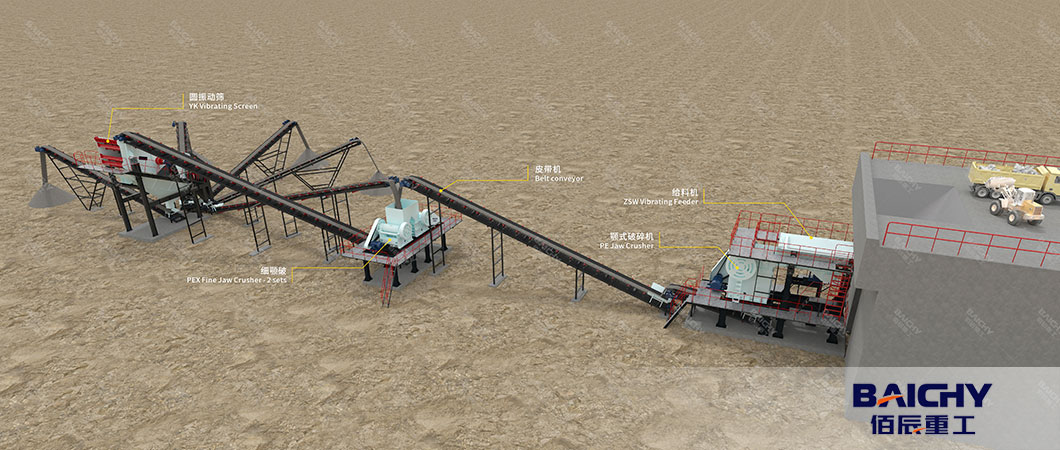 3. Auxiliary Equipment: Enhancing Line Efficiency
3. Auxiliary Equipment: Enhancing Line Efficiency
A complete stone crushing production line includes more than just crushers. Auxiliary equipment ensures smooth material flow, dust control, and product quality:
•Vibrating Feeder: Uniformly feeds raw stones into the primary crusher, preventing overload and ensuring consistent processing.
•Vibrating Screen: Classifies crushed materials into different sizes, returning oversize particles to secondary/tertiary crushers for reprocessing.
•Conveyor Belts: Transport materials between crushers, screens, and storage areas, reducing manual handling and improving workflow.
•Dust Collectors: Capture dust generated during crushing to comply with environmental regulations and protect worker health.
•Storage Silos/Bins: Store finished aggregates for timely delivery to construction sites.
4. Designing an Efficient Stone Crushing Line: Key Considerations
Designing a productive and cost-effective line requires careful planning. Here are critical factors to evaluate:
4.1 Raw Material Characteristics
•Hardness: Hard stones (e.g., granite) require robust jaw or cone crushers, while soft stones (e.g., limestone) can be processed with impact crushers for lower energy consumption.
•Moisture Content: High moisture (over 5%) can cause clogging in crushers and screens. Drying equipment may be needed for wet materials.
•Impurities: Stones with metal or clay impurities may require pre-treatment (e.g., magnetic separators) to avoid damage to crushers.
4.2 Product Requirements
•Particle Size Distribution: Define target sizes (e.g., 0–5 mm, 5–10 mm) based on end-use (e.g., road base vs. concrete aggregate).
•Shape: Cubical aggregates (produced by cone or VSI crushers) are preferred for strength, while angular particles (from impact crushers) work well in asphalt.
4.3 Production Capacity and Cost
•Throughput: Match crusher sizes and numbers to desired hourly output. For example, a 500-ton/hour line may require a large jaw crusher paired with two cone crushers.
•Energy Efficiency: Modern crushers (e.g., hydraulic cone crushers) consume 10–20% less energy than older models, reducing long-term operational costs.
•Maintenance: Choose crushers with easy access to wear parts (e.g., jaw plates, cone liners) to minimize downtime.
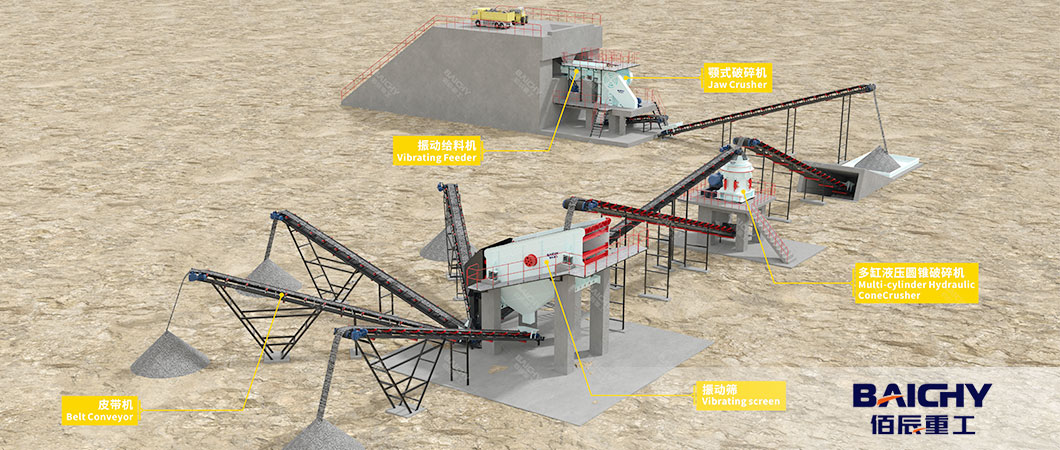
5. Technological Advancements in Stone Crushing Lines
The industry is evolving with innovations that boost efficiency, sustainability, and safety:
5.1 Automation and Smart Control
•PLC (Programmable Logic Controller) Systems: Automate feeding, crushing, and screening processes, adjusting parameters in real-time to optimize output.
•Remote Monitoring: Sensors track crusher performance (e.g., temperature, vibration) and send alerts to operators, enabling predictive maintenance and reducing breakdowns.
Eco-Friendly Solutions
•Low-Dust Crushers: Design improvements (e.g., enclosed chambers, water spray systems) reduce dust emissions by up to 40%.
•Energy Recovery: Some modern crushers incorporate regenerative drives to capture and reuse energy from deceleration, cutting power consumption.
Modular and Mobile Units
•Mobile Crushing Plants: Truck-mounted or tracked crushers allow on-site processing, eliminating the need for transporting raw stones. They are ideal for road construction and small quarries.
•Modular Designs: Pre-assembled components reduce installation time by 30–50%, enabling quick setup and scalability as production needs grow.
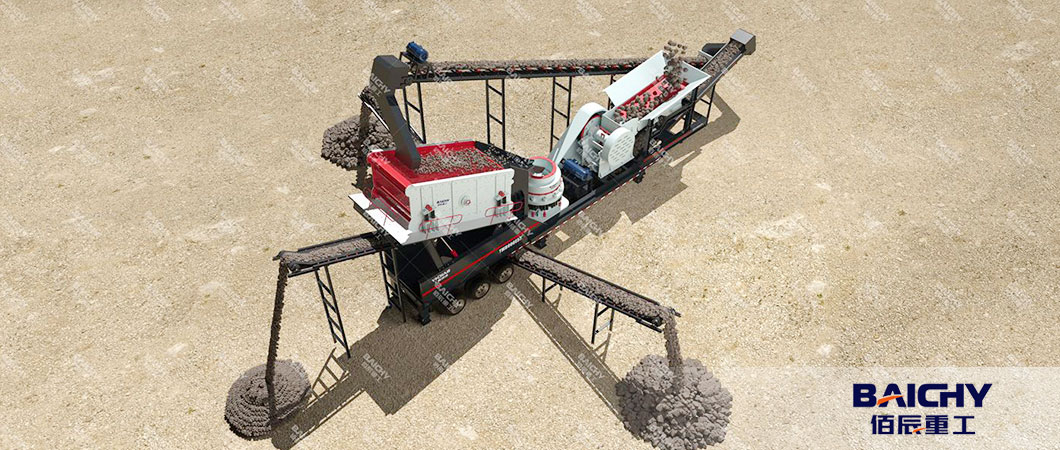
6. Common Challenges and Solutions
Even well-designed lines face challenges, but proactive measures can mitigate them:
•Wear and Tear: Crusher parts (e.g., jaw plates, hammer bars) degrade over time. Using high-chrome or manganese steel components extends their lifespan by 2–3 times.
•Uneven Feeding: Overloading primary crushers causes inefficiencies. Vibrating feeders with adjustable speed controls ensure steady material flow.
•Poor Product Quality: Inconsistent particle sizes result from improper screen setup. Regular calibration of vibrating screens and crusher settings maintains uniformity.
7. Choosing the Right Stone Crushing Line: A Step-by-Step Guide
1.Assess Raw Material: Test stone hardness, composition, and moisture to select compatible crushers.
2.Define Output Requirements: Determine production capacity, desired aggregate sizes, and end-use (e.g., construction, mining).
3.Select Equipment: Pair primary, secondary, and tertiary crushers based on material and output needs. Include auxiliary equipment for efficiency.
4.Optimize Layout: Arrange machinery to minimize material transport distance and maximize workflow (e.g., feeders → primary crusher → screen → secondary crusher).
5.Prioritize Sustainability: Choose energy-efficient models and dust control systems to meet environmental standards.
Conclusion: Investing in a Reliable Stone Crushing Production Line
A well-optimized stone crushing production line, equipped with the right crusher machines and auxiliary equipment, is essential for meeting the demand for high-quality aggregates in construction and mining. By understanding the roles of primary, secondary, and tertiary crushers, leveraging technological advancements, and addressing challenges proactively, operators can achieve high efficiency, reduce costs, and ensure consistent product quality.
Whether you’re planning a small-scale operation or a large industrial plant, partnering with experienced manufacturers to customize your line will maximize returns and support long-term success in the competitive aggregates market.





 3. Auxiliary Equipment: Enhancing Line Efficiency
3. Auxiliary Equipment: Enhancing Line Efficiency

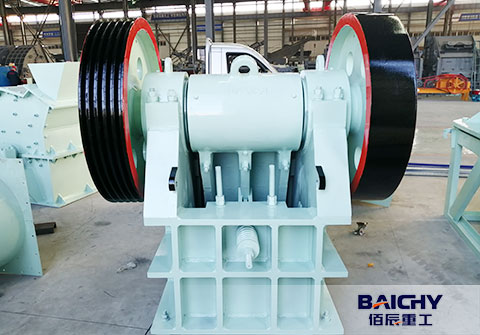
 2026-01-06
2026-01-06
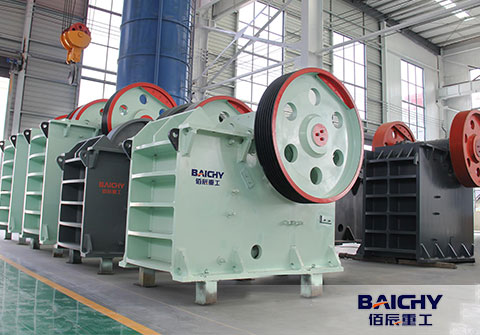
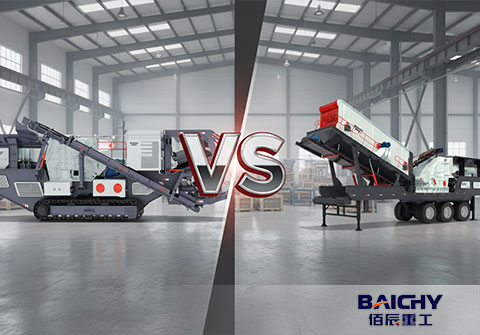
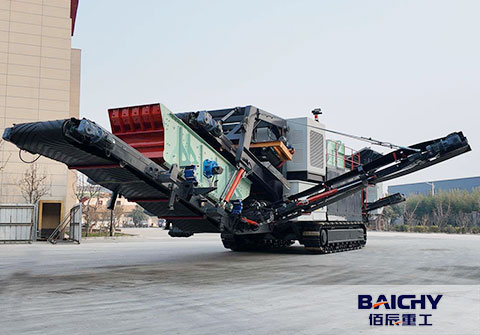
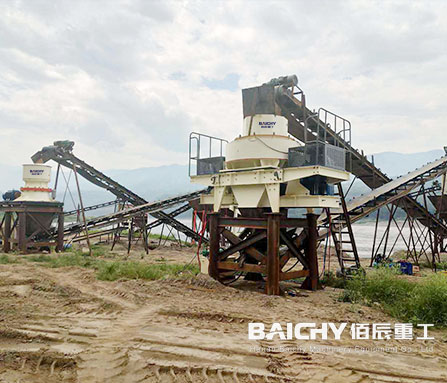
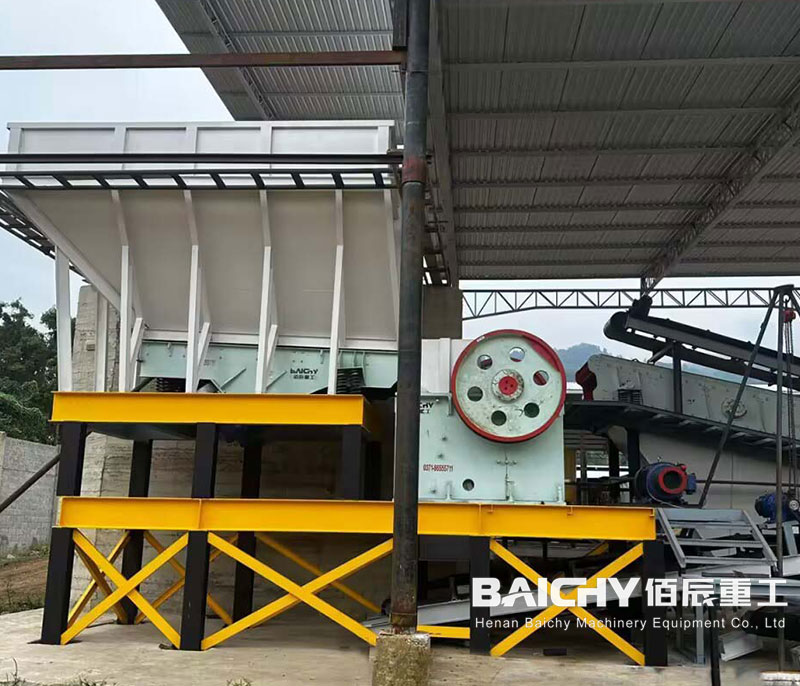
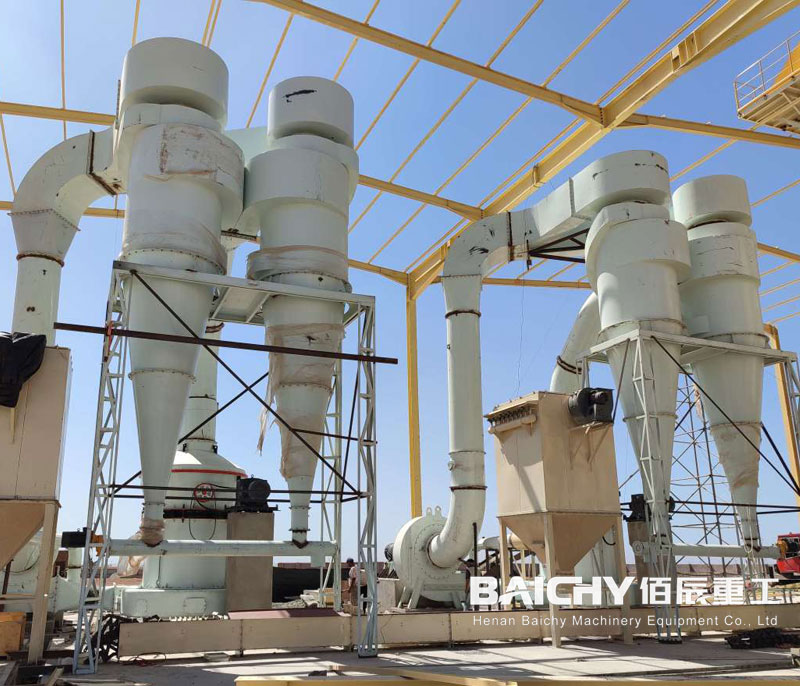
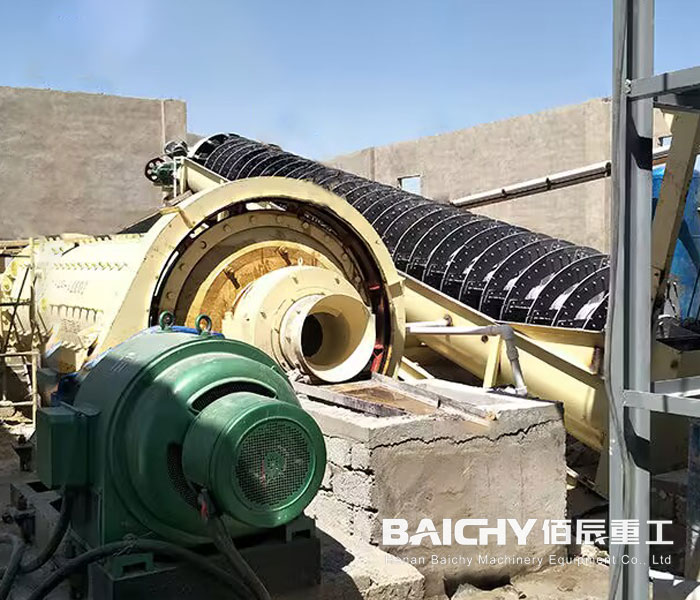














 86-15093113821
86-15093113821
 86-15093113821
86-15093113821

